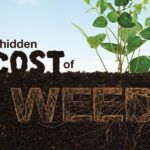Reducing Agriculture’s Carbon Footprint
The World Bank’s BioCarbon Fund, a pilot project, helped start carbon-credit efforts, which could one day benefit U.S. growers.

Pilot programs give organizations the opportunity to refine their approach, developing models that allow for larger scale impacts. That was the idea behind the BioCarbon Fund, a pilot project the World Bank managed from 2004 to 2020. Public- and private-sector partners worked on the project with smallholder farmers to create accounting methods for greenhouse gas emissions and finance plans incentivizing farmers to use sustainable farming practices. The lessons the partners learned now inform carbon sequestration and carbon-credit efforts across the world, including the U.S.
Emission reductions in agriculture can come from a variety of activities, including reducing emissions from farming itself through steps like the improvement of input-use efficiency or from trapping carbon in the soil by means of conservation agriculture. A farmer earns carbon credits through participation in a voluntary carbon market and meeting carbon-reduction criteria. When these markets’ emitters purchase a farmer’s carbon credits to offset their own emissions, the farmer benefits financially for his or her sustainable farming practices.
We believe that if farmers produce societal benefits, they should be rewarded. Carbon credits looked, and still look, like a promising tool to do that.
In the BioCarbon Fund program, nongovernmental organizations in Zambia and Kenya facilitated interaction with smallholder farmers. The Syngenta Foundation, which focuses on bringing innovation to smallholders, provided those organizations with agronomic advice and connections to sustainable-farming solutions.
“Incentive systems are largely missing in developing countries,” says Dominik Klauser, research and development lead at the Syngenta Foundation. “We believe that if farmers produce societal benefits, they should be rewarded. Carbon credits looked, and still look, like a promising tool to do that.”
An important lesson learned from the BioCarbon Fund is that financial benefits multiply if program administrators invest in good outreach and input provision systems. For example, farmers’ productivity more than doubled in Kenya through the extension and inputs financed by sales of carbon credits through the BioCarbon Fund.
“Apart from being an investor, our role in the BioCarbon program also included co-creation of the first methodology for issuing carbon credits based on emission reductions from agricultural activities,” Klauser says.
In its ongoing efforts to help smallholder farmers, The Syngenta Foundation is currently working with the One Acre Fund. The program assists more than 1 million farmers in eastern Africa, improving their productivity and livelihoods through the provision of quality inputs — including seed, fertilizer and crop protection products — and extension services.
“The objective is to identify elements of the One Acre Fund’s work that can be used as a basis for partner farmers to obtain carbon payments,” Klauser says. “We have identified several promising areas of intervention. Pilots will take place in Zambia, Tanzania and Rwanda.”
Smallholders in developing countries lack access to many things North American farmers take for granted, says Paul Castle, head of communications at the Syngenta Foundation. “The Syngenta Foundation continues to help smallholders by focusing on insurance, good seed and agricultural services.”
2 Min Read
More Articles About Community & Culture
2 Min Read























